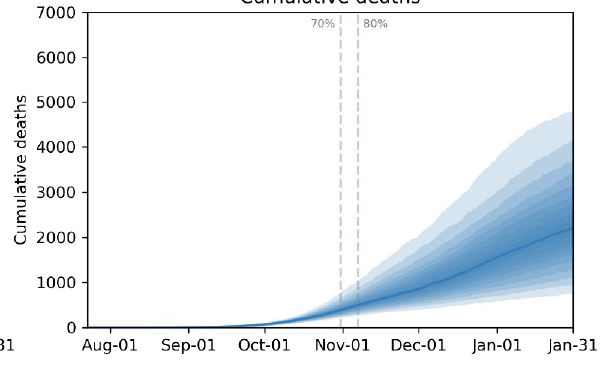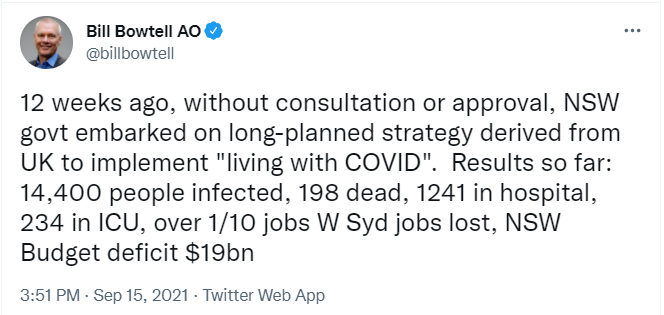
OK, here’s the promised comparison of the modeling for Ao/NZ from Nicholas Steyn, @MichaelPlankNZ, and @hendysh of @PunahaMatatini with the modelling done for the National Plan in Australia by @thedohertyinst.
Model is here:
Thread 1/🧵
tepunahamatatini.ac.nz/2021/09/23/mod…
Model is here:
Thread 1/🧵
tepunahamatatini.ac.nz/2021/09/23/mod…
First, comparing the Punaha Matatini and Doherty models is easy. They use very similar methodology. The contact matrix is the same, taken from this paper: journals.plos.org/ploscompbiol/a…
2/🧵
2/🧵
What that means is that in both models children and the elderly contribute relatively little to transmission, which is driven more by working-age people.
3/🧵
3/🧵
The two models make different assumptions about delta’s transmission and effects of public health.
Compared to Doherty, Punaha Matatini assume a lower R0 (6 instead of 8), and a smaller role of baseline public health measures, and for test/trace/isolate/quarantine (TTIQ).
4/🧵
Compared to Doherty, Punaha Matatini assume a lower R0 (6 instead of 8), and a smaller role of baseline public health measures, and for test/trace/isolate/quarantine (TTIQ).
4/🧵
Punaha Matatini models “full” and “limited” TTIQ, but the overall effect, and the differences between the two, are smaller than in Doherty.
5/🧵
5/🧵
Punaha Matatini recognizes the significant uncertainty around vaccination efficacy (VE) against infection, transmission, and severe disease. Hence they model three different scenarios for overall vaccine efficacies, “high”, “central”, and “low” (see table).
6/🧵
6/🧵

Doherty assumes high VE against transmission (important for rest of this discussion) as well as against severe disease.
This also shows up in the recent model from Population Interventions Unit, which also assumes a lower VE. See this thread:
7/🧵
This also shows up in the recent model from Population Interventions Unit, which also assumes a lower VE. See this thread:
https://twitter.com/MichaelSFuhrer/status/1440562898699362310
7/🧵
The difference can be summarized graphically by plotting the modelled effective reproductive number R_eff against percentage of total population vaccinated for the two models.
8/🧵
8/🧵

Note that Doherty Institute modelled vaccination for 16+, and Punaha Matatini 12+ and 5+, with results quote as a fraction of those respective populations. Here I plot the corresponding fractions of total population.
9/🧵
9/🧵
We can see that the Doherty model lines up well with the high VE of the Punaha Matatini model. The larger spacing between “optimal” and “partial” TTIQ in Doherty compared to “full” and “limited” TTIQ in Punaha Matatini is due to latter assuming TTIQ overall less effective.
10/🧵
10/🧵
More conservative assumptions (“central” or “low”) about VE greatly increase the R_eff that can be achieved with vaccination within the Punaha Matatini model.
11/🧵
11/🧵
What does it all mean?
R_eff controls whether infections grow (R_eff > 1) or decay (R_eff < 1). We therefore need to achieve R_eff < 1 to have control over the epidemic with our public health and social measures (PHSMs).
12/🧵
R_eff controls whether infections grow (R_eff > 1) or decay (R_eff < 1). We therefore need to achieve R_eff < 1 to have control over the epidemic with our public health and social measures (PHSMs).
12/🧵
Punaha Matatini assumes that baseline PHSMs include all measures that can be put in place for extended periods (e.g. NOT lockdowns and closures, but air quality control, vaccination passports, mask use, rapid testing, etc.)
13/🧵
13/🧵
If vaccine efficacy is high, then we can achieve R_eff < 1 with high levels of vaccination of 12+, or more easily with vaccination of 5+. Doherty Institute assumes other PHSMs would be needed to achieve further reduction in R_eff.
14/🧵
14/🧵
If VE is comparable to the “central” estimate, then very high vaccination of 5+ along with baseline PHSM and TTIQ are necessary to achieve R_eff < 1.
If VE is “low”, then control of the outbreak cannot be achieved with vax+baseline+TTIQ and stronger measures are needed.
15/🧵
If VE is “low”, then control of the outbreak cannot be achieved with vax+baseline+TTIQ and stronger measures are needed.
15/🧵
Is this realistic?
The bottom line is that we simply do not know whether the model assumptions for either model are accurate. This is why, for example, the Punaha Matatini model includes a range of assumptions for VE.
16/🧵
The bottom line is that we simply do not know whether the model assumptions for either model are accurate. This is why, for example, the Punaha Matatini model includes a range of assumptions for VE.
16/🧵
Unfortunately, the range of reasonable assumptions for *any* model is presently large enough such that the output can be R_eff << 1 (outbreak controlled) or R_eff >> 1 (no control of outbreak possible).
This isn’t very helpful, but that is the current state of modelling!
17/🧵
This isn’t very helpful, but that is the current state of modelling!
17/🧵
We can perhaps do a little better by looking at the state of other countries. I’ve looked at several countries in this thread, focusing on countries with low covid through the pandemic (similar to AU and Ao/NZ).
18/🧵
https://twitter.com/MichaelSFuhrer/status/1439727241051525125
18/🧵
I’ll select one to compare to the models: Denmark went into delta with only baseline PHSMs. It has moderate caseloads throughout its delta wave (~500-1000/day), which still would correspond to “partial” or “limited” TTIQ.
DK has seen 104 total deaths from delta (18/M).
19/🧵
DK has seen 104 total deaths from delta (18/M).
19/🧵
Here’s DK’s R_eff for 1 July - present, when epidemic dominated by delta.
Ages 12+ currently eligible for vax in DK.
Minimal restrictions beyond baseline PHSMs have been in place during this period, and in fact all restrictions were removed in 10 Sept.
20/🧵
Ages 12+ currently eligible for vax in DK.
Minimal restrictions beyond baseline PHSMs have been in place during this period, and in fact all restrictions were removed in 10 Sept.
20/🧵

Denmark tracks well the most optimistic assumptions of the Punaha Matatini model (in fact, Punaha Matatini would indicated vaccination of 5+, and full TTIQ, would be necessary to do as well as DK is doing now).
21/🧵
21/🧵
It appears that it is possible to achieve R_eff < 1 with <80% vaccination of the total population, without vaccinating <12s, and without stringent PHSMs.
22/🧵
22/🧵
We don’t know which assumptions of the models are incorrect. This is unsurprising as the are several assumptions which are not well tested.
But, for the moment, there is no reason to expect the pessimistic scenarios of the Punaha Matatini model are unavoidable.
23/🧵
But, for the moment, there is no reason to expect the pessimistic scenarios of the Punaha Matatini model are unavoidable.
23/🧵
P.S. I plotted DK to keep it simple. Here are *all* the low-covid countries currently with delta outbreaks and only modest PHSMs (no lockdowns). Except for SG, all are performing better than the most optimistic models.
24/24🧵
24/24🧵

• • •
Missing some Tweet in this thread? You can try to
force a refresh






